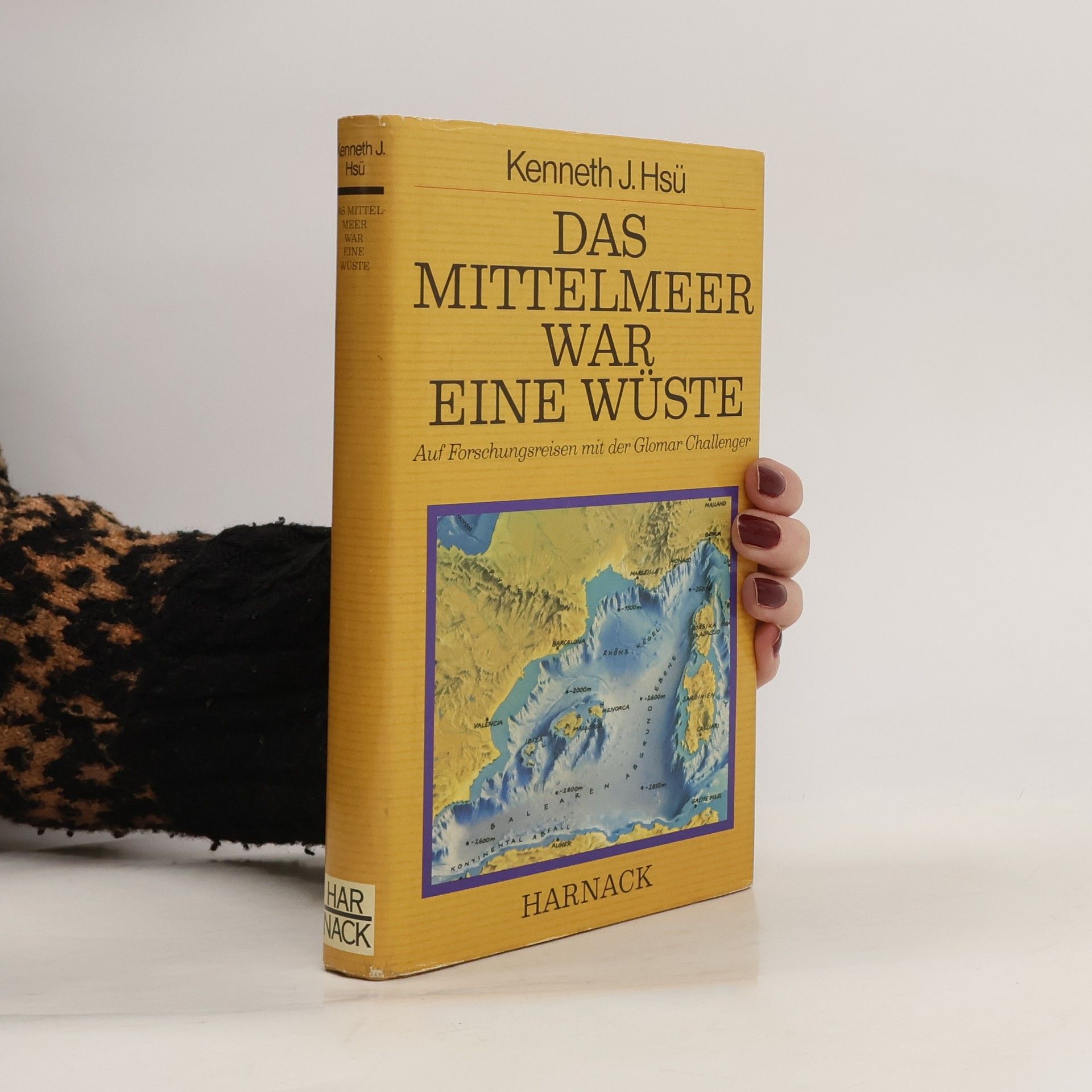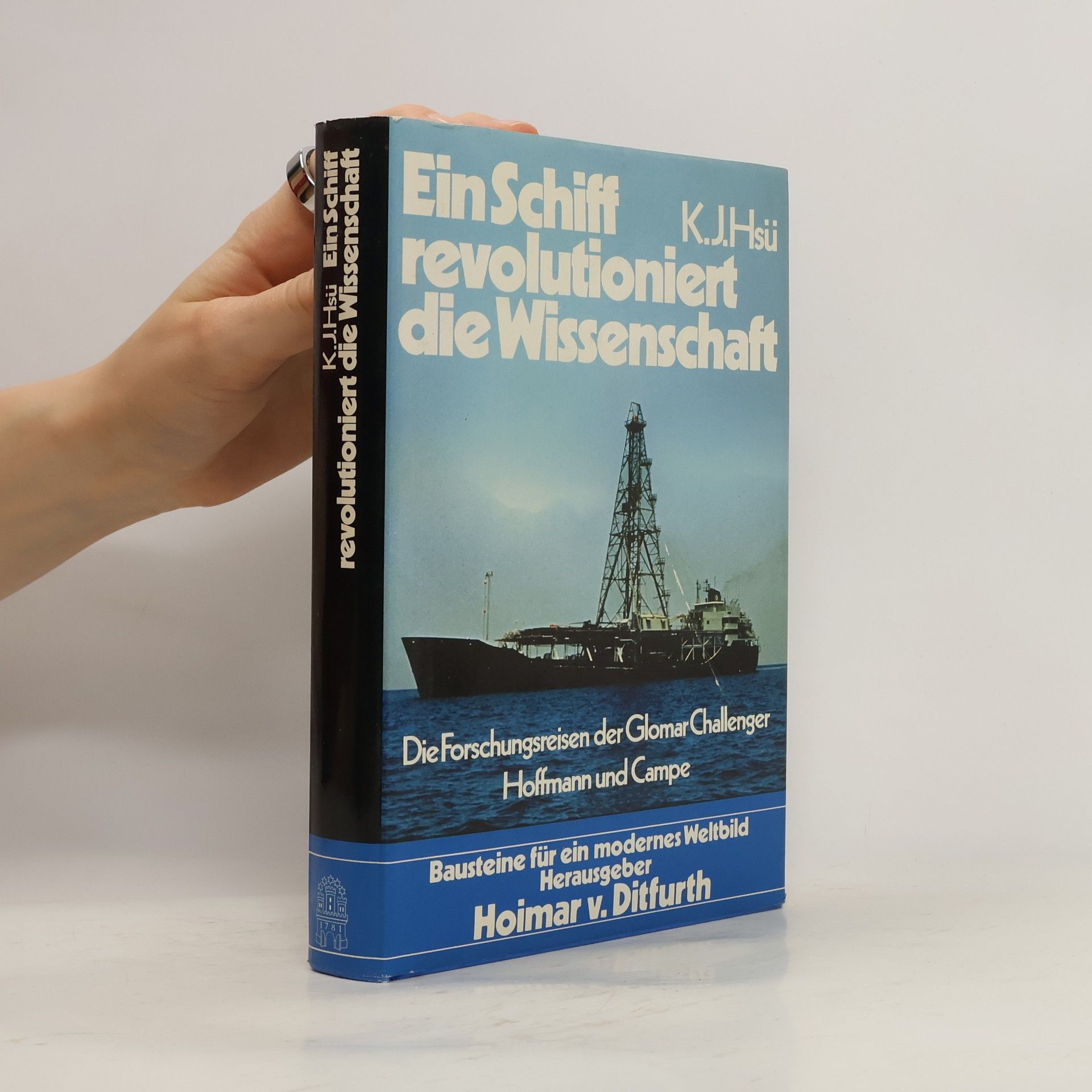The Glomar Challenger, a groundbreaking geological research ship, transformed earth science akin to the impact of the cyclotron on nuclear physics. Its deep-sea drilling expeditions from 1968 to 1983 marked significant scientific milestones, beginning with support for continental drift and playing a pivotal role in the plate-tectonics revolution, challenging established theories. Kenneth Hsu, a prominent oceanographer and earth scientist, shares a personal narrative of the diverse crews onboard—the sailors, drillers, marine technicians, and scientists—who faced not only the ocean's resistance but also mechanical failures, health issues, and interpersonal dynamics. Despite these challenges, the intellectual rewards were immense, and Hsu captures the excitement of scientific discovery. As an insider, he presents biographical sketches, humorous anecdotes, and historical context, weaving them into a narrative of the ship's explorations across the Pacific, Atlantic, Indian Oceans, and polar seas. From the controversial drilling of a "Mohole" to evidence of a meteor's role in the dinosaurs' extinction, the work offers a comprehensive overview of marine geology and serves as a valuable resource for understanding the history of this scientific field.
Kenneth J. Hsu Livres






Physics of sedimentology
Textbook and Reference
Physics of Sedimentology explains sedimentological processes via the fundamental physics that underlies the actual mechanisms involved. The applicability of fundamental principles, such as Newton's Three Laws of Motion, the Law of Conservation of Energy, the First and Second Laws of Thermodynamics, and of other physical relations in hydraulics and groundwater hydrology is illustrated by discussions of natural processes which form sediments and sedimentary rocks. The author's educational background as a major in physics and geology, and his 40-years' experience in teaching and research have enabled him to bring together physics and geology in this enjoyable and highly readable book. In this second edition several chapters have been updated and amended to reflect progress in the field.
Klima macht Geschichte
- 334pages
- 12 heures de lecture
Warum gab es eine germanische Völkerwanderung? Warum verbrannten 330 000 Helvetier ihre Häuser und zogen nach Frankreich? Wie konnten die Slawen in den Balkan eindringen? Und wie in den Norden Deutschlands? Welches waren die Ursprünge der Christianisierung des Ostens? Hsüs These: Die Chronik unserer Zivilisationsgeschichte ist ein Ausdruck der klimatischen Veränderungen der letzten 5000 Jahre. Die globalen Temperaturen haben sich in historischer Zeit durchschnittlich nur um einen oder zwei Grad verändert, aber das hatte schreckliche Folgen, denn globale Kälteperioden liessen die Versorgung mit Lebensmitteln unter den Mindestbedarf sinken, was zu Völkerwanderungen auf der Suche nach einem 'Platz an der Sonne' führte. Während globaler Wärmephasen dagegen überstieg die Nachfrage infolge explosionsartigen Bevölkerungswachstums das grösser gewordene Nahrungsangebot, was 'heuschreckenartige' Eroberungsfeldzüge zur Folge hatte. Hsüs Untersuchung ist spannend und verständlich geschriebene Menschheitsgeschichte unter einem neuen, faszinierenden Blickwinkel.
Geologie der Schweiz
Ein Lehrbuch für den Einstieg, und eine Auseinandersetzung mit den Experten
InhaltsverzeichnisVorwort. I Der Jura. Grundlagen der Stratigraphie, stratigraphische Taxonomie, Fazieskonzept und vergleichende Sedimentologie. II Das Schweizerische Mittelland. Quartäre Eiszeit, Zürichseeprofil und tertiäre Molasseformationen. III Die Alpen. Deckentheorie, Gliederung der Schweizer Alpen, autochthone und parautochthone Massive, helvetische und ultrahelvetische Decken, Flysch, präalpine und penninische Decken, Bündnerschiefer, Ophiolithe und Mélanges. IV Das Helvetikum. Einsiedler Schuppenzone, Wang “Transgression” und palinspastische Rekonstruktion der helvetischen Paläogeographie. V Der Flysch. Definition und wiederkehrende Fazies, nord- und südhelvetischer Flysch, “ultrahelvetischer” Flysch, Wildflysch der Zentralschweiz, Schlieren, Gurnigel und Wägital Flysch, Niesen Flysch, weitere Flysch-Formationen, Flysch-Tektonik und Paläogeographie. VI Die Klippen. Klippendecke, Breccien- und Simmen-Decke, paläogeographische und tektonische Entwicklung der Präalpen. VII Die Penninischen Grundgebirgsdecken. Kristallindecken des Wallis, Deformation und Metamorphose im Penninikum. VIII Die Bündnerschiefer. Bündnerschiefer und Schistes lustrés, regionale Betrachtungen und paläogeographische Aspekte. IX Die Ophiolith Mélange. X Die Geschichte der Penninischen Deformation. Eo-alpine und meso-alpine Deformationen, paläogeographische und tektonische Geschichte des Nord- und Mittelpenninikum. XI Die Ostalpinen Decken und das
Die letzten Jahre der Dinosaurier
- 270pages
- 10 heures de lecture
Quaternary geology of Lake Zurich
- 210pages
- 8 heures de lecture
Swiss lakes are a national treasure, with naturalists leading the way in limnology. These lakes serve as model oceans for natural experiments, revealing insights like the significance of turbidity currents in sedimentation, recognized in Swiss lakes long before similar roles were acknowledged in oceans. Non-glacial varves in Lake Zurich have been cited as modern analogues of ancient ocean sediments, and current studies are linking water circulation to fertility, crucial for understanding oceanic chemistry. Since the 1960s, limnogeology research in Switzerland has utilized oceanographic techniques, emphasizing interdisciplinary collaboration among geoscientists. The Swiss Federal Institute of Technology's limnogeology group has engaged in diverse activities, including geophysics and palaeontology, inspired by discussions on deeper lake bottom exploration. Lake Zurich was selected for drilling due to its low Holocene sedimentation rate, allowing for deeper historical insights. Preliminary studies indicated stable deepwater temperatures, making it ideal for geothermal research. The Zübo 80 drilling project aimed to measure heat flow, uncover climatic history during the Quaternary, and understand sedimentary responses to glacial movements. Completed to 200 m in three months, the project involved a diverse team of doctoral students and researchers, culminating in a multiauthored monograph that maintains a consistent style.
Das Mittelmeer war eine Wüste
- 200pages
- 7 heures de lecture

